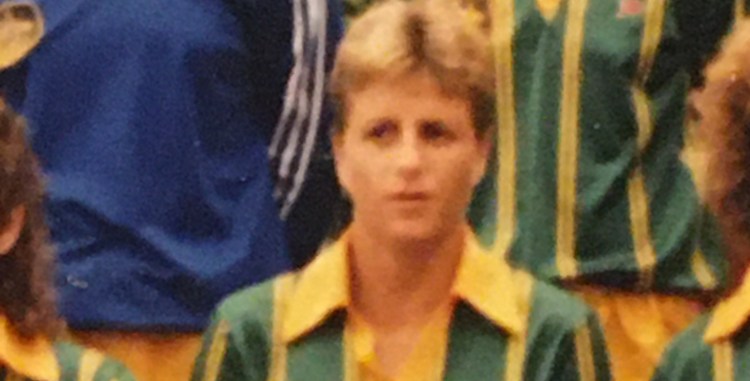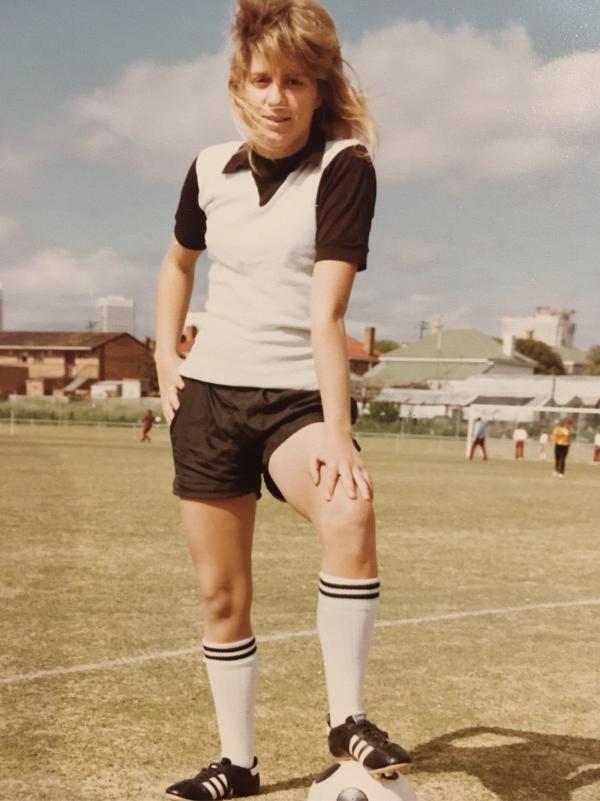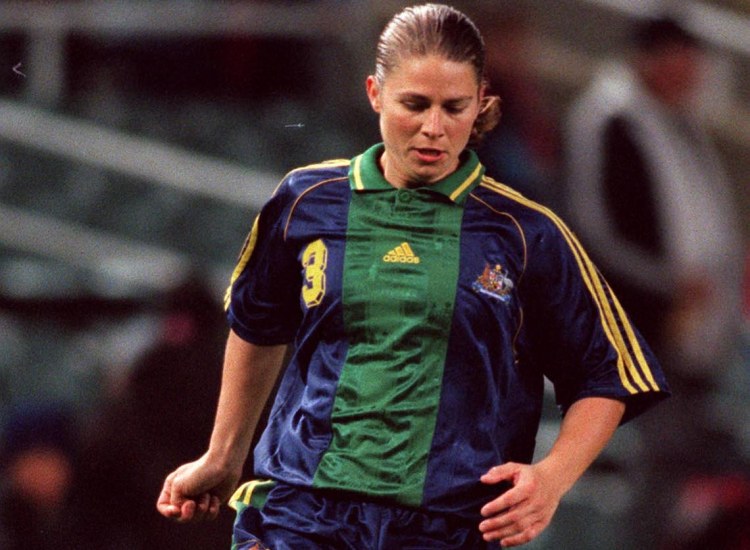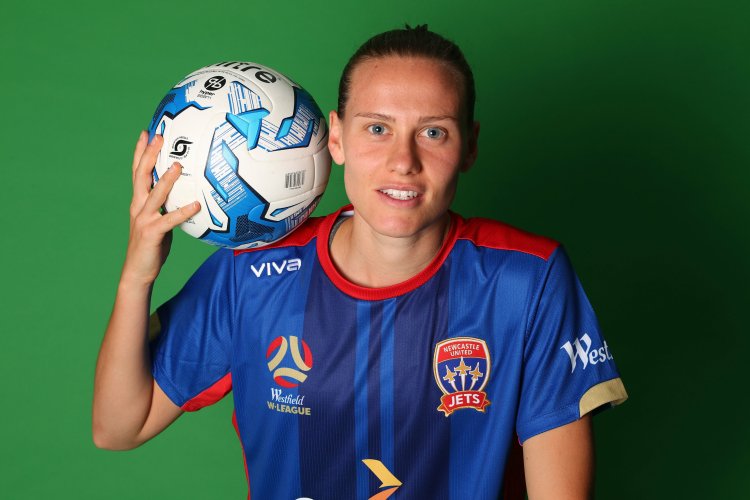In 2021/22, the Newcastle Jets will return to the Gold in a statement that the Club is committed to reconnecting with our origins and upholding the history of football in the region.
As part of that focus, this season’s jersey will also feature the number ‘1884’ boldly on the back – the year in which the first football club in Northern NSW was founded.
In an upcoming ‘1884’ series, local award-winning football author, and University of Newcastle Emeritus Professor, John Maynard, will travel through the history of football in our region, highlight some of the heroes that put us on the world map, and ultimately, explore the historic foundations that have allowed the Jets to flourish.
This edition explores the influential female footballers who’ve lit up Northern NSW and their introduction to the sport.
More: What ‘1884’ means to football in Northern NSW

It is not surprising that Northern New South Wales is at the very forefront of women playing the game in Australia.
It has been noted that the earliest references to women taking part in the game was during the 1880s. That involvement began to increase at the turn into the twentieth century especially after 1910. Records reveal that there were women’s teams playing at West Wallsend during the First World War.
Some of the earliest records of organised women’s football competition played in Australia was in Brisbane during the early 1920s. During this time there were at least three active teams in and around Brisbane. In September 1921, a game was played at the Brisbane Cricket Ground between a team from North Brisbane and a team from South Brisbane. The match had over 10,000 people in attendance. Early football outfits for women included long socks, long-sleeved football jerseys, baggy shorts, and purpose worn football shoes.

Originally, football was not played by girls at schools. Instead, football was played by mainly factory workers. The game in the north for women had obviously continued and grown as in 1929 more than 7000 people paid to attend the State Women’s Soccer Final, played under floodlights at the Sydney Sports Ground, and witnessed the victory of an all-Northern New South Wales Final, won by Speers Point over Weston 1-0.
During the 1970s, 1980s and 1990s, women’s football saw a large expansion in the number of competitors. The game for women exploded in the mid 1970s and can be linked to a rise in interest with the game following the high exposure of the game following the Socceroos qualification for the 1974 World Cup finals in West Germany.
A series of women’s trans-Tasman challenge matches were organised in 1974 and three New Zealand women’s teams – Blockhouse Bay, Eden Saints and Papakura Bay – visited Sydney.
Coinciding with these matches, the New South Wales Women’s Soccer Federation was formed under the leadership of Pat O’Connor. O’Connor was a visionary and a committed campaigner for women’s soccer in Australia; she had been Secretary of the Sydney Women’s Soccer Federation before the state body was formed. From that point on, the game for women spread rapidly throughout every state and territory and has now established an international profile thanks to the achievements of the Australian women’s team the Matildas.
KAREN MENZIES
Karen Menzies the first Aboriginal Matilda was born in 1962. She had been removed from her Aboriginal mother as a baby and made a ward of the state. She was initially placed in an institution until she was one year old before being placed with a foster family in Sydney who wanted to adopt a baby.
It was through her foster brother that she developed a love of soccer. They played backyard and school yard soccer constantly. A love of the game developed, and every spare minute was spent kicking a ball. She was still a ward of the state and the Department of Child Welfare started to impact upon her life, and this undermined any thoughts of actual belonging as part of a family.

At the age of thirteen Menzies was placed in an institution in Sydney and eventually moved to another institution at Newcastle. On her arrival in Newcastle, she was informed that she would have to choose a sport to play and one of them was football. She literally jumped out of her chair, saying soccer. She was so excited to be playing the game it became her point of focus.
She was immediately recognised as a talent and gained representative honours. In 1977 aged fourteen she was picked for the NSW team and would remain a member of the NSW squad for the next thirteen years. Football was her life. It gave her a sporting identity, provided self-esteem and confidence, and got her through a very difficult period. It also provided an outlet to unleash a certain degree of angry aggression. On the field she was fiercely competitive.
At the age of eighteen Karen Menzies was discharged from her wardship and initially worked for the Department of Sport and Recreation. She would switch to the Department of Community Services during the 1980s working with children and families.

During the 1990s she worked on the Stolen Generations Inquiry. She has gone on to acquire university qualifications including a PhD that developed a trauma framework into the practice of welfare practitioners working with Aboriginal children and families.
Her career was an exceptionally long one representing Northern NSW from 1977 to 1991. She represented Australia in the Oceania cups in 1983, 1986 and 1989 for a total of seven caps.
Her career was ended by crippling knee injuries that resulted with three knee reconstructions and a broken ankle. She would take up coaching including the Newcastle representative team and eventually as assistant coach of the Matildas team that played in Denmark. She is unquestionably one of the great women players of this region.
BRIDGETTE STARR
Bridgette Starr was another Aboriginal star player. She was born in Tamworth in 1975 and at one point with fifty-three caps was the Matildas most capped player.
It was not until her family had moved to the Hunter Valley that she took to soccer. She played for Branxton-Greta, Weston Bears, Raymond Terrace, Cardiff, and Hunter Port Stephens. She was that good that at one point she played in the boys’ team for Branxton-Greta. Her progress was meteoric.

She was an inaugural fulltime scholarship holder in the Australian Institute of Sport (AIS) women’s soccer program. At sixteen she was a member of an Australian Youth team that won the 1993 Dana Cup in Denmark and the Australian Youth team that toured New Zealand in 1994.
That same year she was picked for her first appearance for the Matildas in a game against Japan in front of 40,000 fans. She was a member of the Matilda’s team that won two Oceania Cups in 1994 and 1998. She played in the 1999 Women’s World Cup and was in the Sydney Olympic Games Matildas squad. She would go on to play in the United States.
EMILY VAN EGMOND
Emily Van Egmond is an outstanding player of this region. The daughter of former Socceroo and Newcastle Jets Grand final winning coach Gary Van Egmond.
She started playing the game at five in Newcastle but unquestionably received some backyard coaching. She burst upon the local national competition scene playing for Canberra United for two seasons.

She has had four stints with her hometown team the Newcastle Jets playing over fifty games. She has also played for Western City Wanderers and Melbourne City (two championships). She has been much sought after playing for international clubs in Denmark, Germany, England, and the United States.

She has been a constant member of the Matildas team since making her debut against the Democratic People’s Republic of Korea in 2010. She has played in World Cups and Olympic Games for the Matildas and has represented her country on106 times and scoring 23 goals.
More: What ‘1884’ means to football in Northern NSW
Get your 2021/22 Newcastle Jets Membership today!






